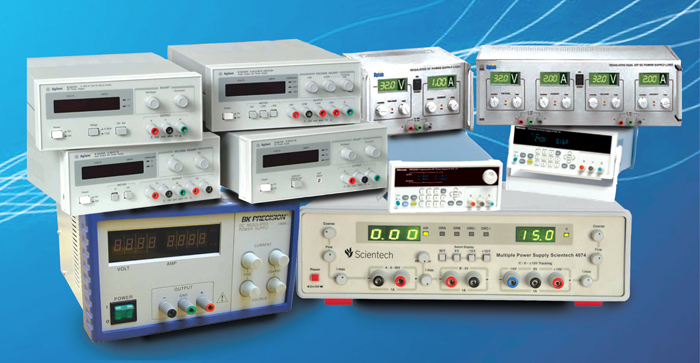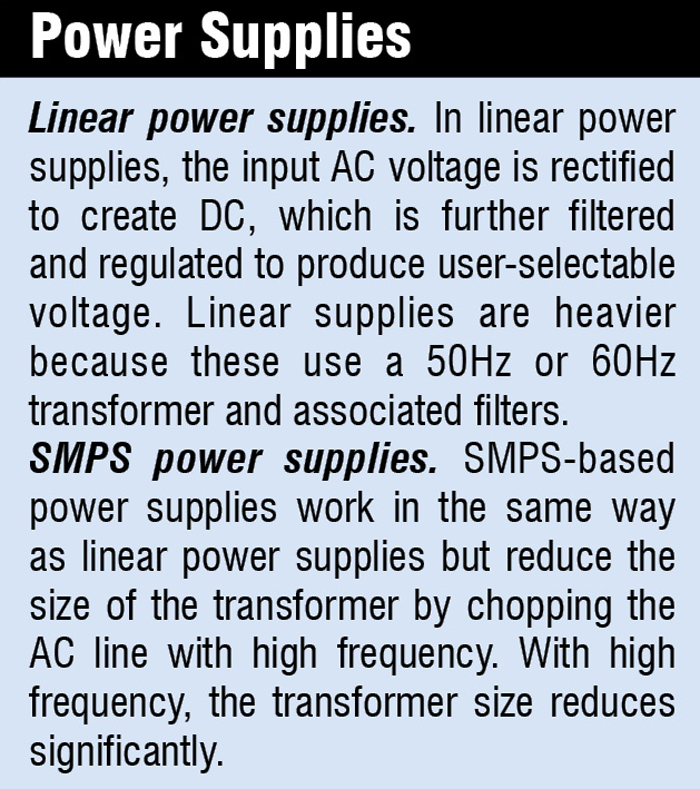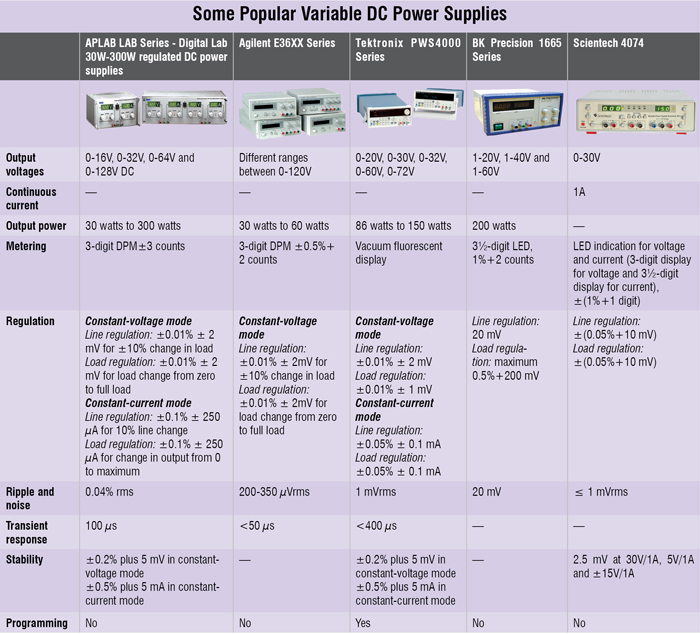Variable power supply is generally the first equipment to find its place on an electronics engineer’s desk. It is undoubtedly the most popular test tool after a multimeter. There are a wide variety of power supplies available. Selecting the right one for your project requires a good understanding of how they are specified.

There are basically two types of power supplies that are used as test equipment: Linear power supplies and switch-mode power supplies. Switch-mode power supplies are lighter and have replaced linear power supplies in many applications. However, linear power supplies continue to be preferred because of their accuracy, durability and very little noise at the output. These power supplies are excellent for applications that are sensitive to small power variations.
Each manufacturer has a number of power supplies that are majorly specified by output voltage and current rating. The ratings that you would require will completely depend on the application area. For example, for regular electronics testing, a 32V/2A power supply is good enough. But if you are working on a project for Indian railways, you need at least 110V/5A because input supply in Indian railways is 110V.
Specifications in datasheets look complicated at first sight but these can be easily understood by categorising them. Broadly, there are five categories: Accuracy, resolution, regulation, AC characteristics and packaging. In all the organisations, equipment are regularly calibrated so that they keep delivering these specs without any deviation.
Accuracy

Accuracy is one of the most critical requirements for a power supply. It indicates the degree of closeness of the real value to the specified value. Power supplies are becoming more and more digital these days. The embedded system of the power supply receives digital inputs from the user and converts them into analogue quantities using a digital-to-analogue converter. The analogue quantities are then used as reference for analogue regulators to produce the required output. Also, the output is fed back to an internal meter for measuring its value. The quality of this process determines the accuracy of the power supply.
In a datasheet, there are two specifications under accuracy: output accuracy and meter accuracy.
Output accuracy. Output accuracy defines the closeness of regulated output to the theoretically calculated value. It is represented as ± (% theoretical value + offset value). So if you have set the knob at 5V, probably you are getting only 4.95V at the output
Meter accuracy. It defines how close internally read values are to theoretically calculated output values. It is also generally represented as ± (% theoretical value + offset value).
Resolution
Resolution is the minimum step change that you can select with the power supply. In low-current applications, resolution plays a significant role. Similar to accuracy, specifications under resolution are output resolution and meter resolution.
Output resolution. It is the minimum change in current or voltage that can be achieved through the power supply. Generally, 1mV/0.1mA resolution is used for lab experiments.
Meter resolution. Meter resolution is the minimum change that the power supply can read back and indicate on the display.
Regulation
Regulation is specified as load regulation and line regulation.
Load regulation. It defines the consistency in the output even if the load changes. If the load impedance changes, ideally the set parameters should not change significantly. Load regulation is mentioned in the datasheets as ± (% set value + offset value).
Line regulation. It defines the consistency in the output even if the input supply or frequency to the power supply varies. It is represented in the same way as load regulation.
AC characteristics
Ideally, we expect pure DC at the output but there is always some AC component present together with DC component as no power supply is perfect. Some devices are highly sensitive to this AC component.

AC characteristics defining specs are noise and ripple, and transient response.
Noise and ripple. Ripple is a periodic component, whereas noise is completely random. These components are not indicated separately as they cannot be separated. Noise and ripple is expressed as a root-mean-square as well as peak-to-peak value.
Transient response. Transient response indicates the response time of power supply to changes. If you change the voltage, transient response indicates how quickly the power supply settles to the set value.
Packaging
Packaging gives details like overall dimensions and ports location. Most power supplies are designed for standard 48.3cm (19-inch) rack dimensions.






